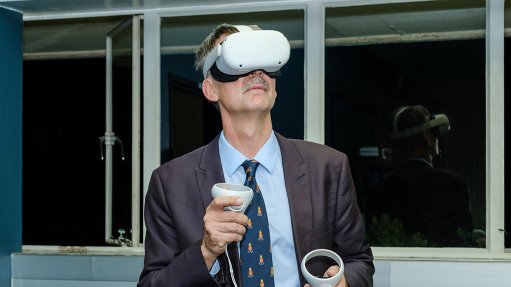Regionalisation strategy needed for South African automotive manufacturers to grow
South African automotive manufacturers need to drive a strong regionalisation strategy in Africa, according to National Association of Automotive Component and Allied Manufacturers of South Africa (Naacam) president Dave Coffey.
Welcoming guests to the first Naacam show, which has been billed as the country’s premier automotive component initiative and includes the National Localisation Indaba, which was developed by the Durban Automotive cluster, in 2013, as a practical mechanism to bring together original-equipment manufacturers (OEMs), suppliers, government and labour leaders to debate steps to drive increased levels of localisation in the sector.
In 2016, Naacam members’ sales were an estimated R59-billion. The turnover of the entire component manufacturing sector is an estimated R84-million.
This year’s approach to localisation, which currently sits at just 38%, was to view it as a regional imperative as opposed to a local nice-to-have.
Coffey acknowledged that initiatives to open up trade across the sector were taking longer than expected, warning that if the local sector did not pursue opportunities in Africa, someone else would.
He pointed out that successful comparator countries such as Thailand, Morocco and Turkey that had been used as benchmarks in developing South African automotive policy, all had strong regional markets.
While acknowledging that some OEMS and component manufacturers had already made their first moves into Africa, Coffey stressed that more needed to be done.
“As component manufacturers, this may mean we initially invest in adding value in these countries in order to supply the aftermarkets, while we support the African Association of Automotive Manufacturers in working with the various African government in developing an automotive policy, exploring solutions for vehicle finance and securing foreign exchange,” he said.
At the same time, a great deal still needed to be done to hone the automotive masterplan that was being driven by the Department of Trade and Industry as a precursor to a wider supporting legislation that will take effect from 2020.
Coffey said Naacam took the need to align with the wider objectives and parameters of government support in this sector very seriously. Hence, throughout the event, there would be significant emphasis on localisation and black supplier development themes.
At this point, he said there were not enough black-owned manufacturing suppliers and called for industry driven programmes that would focus on the development of current and new black-owned manufacturing suppliers.
Included in the 181 exhibitors at the show, are 34 black-owned supply companies.
Coffey added that the automotive industry recognised and agreed that it was important to develop emerging black industrialists as they were the future of South Africa’s economic development.
Black supplier development went hand in hand with localisation.
He noted that an automotive policy framework that aligned with the agreed post-2020 masterplan for the automotive sector was a structural requirement for our industry.
“It is so important that policies drive greater and deeper localisation in both the vehicle assembly and the tiered supply value chains…. What’s more important in this review process is that the final policy must view localisation as a must-have objective as opposed to expecting a trickledown effect,” Coffey said.
He went on to emphasise that accompanying policies must shift away from the status quo.
“This requires courage and vision in striking the right balance. OEMs are the most important drivers of the value chain but a local contract average hovering around 38% won’t give our sector the depth and scale of competitiveness needed to maintain this country’s status as a true value adding manufacturer of automotive products,” Coffey said.
Comments
Announcements
What's On
Subscribe to improve your user experience...
Option 1 (equivalent of R125 a month):
Receive a weekly copy of Creamer Media's Engineering News & Mining Weekly magazine
(print copy for those in South Africa and e-magazine for those outside of South Africa)
Receive daily email newsletters
Access to full search results
Access archive of magazine back copies
Access to Projects in Progress
Access to ONE Research Report of your choice in PDF format
Option 2 (equivalent of R375 a month):
All benefits from Option 1
PLUS
Access to Creamer Media's Research Channel Africa for ALL Research Reports, in PDF format, on various industrial and mining sectors
including Electricity; Water; Energy Transition; Hydrogen; Roads, Rail and Ports; Coal; Gold; Platinum; Battery Metals; etc.
Already a subscriber?
Forgotten your password?
Receive weekly copy of Creamer Media's Engineering News & Mining Weekly magazine (print copy for those in South Africa and e-magazine for those outside of South Africa)
➕
Recieve daily email newsletters
➕
Access to full search results
➕
Access archive of magazine back copies
➕
Access to Projects in Progress
➕
Access to ONE Research Report of your choice in PDF format
RESEARCH CHANNEL AFRICA
R4500 (equivalent of R375 a month)
SUBSCRIBEAll benefits from Option 1
➕
Access to Creamer Media's Research Channel Africa for ALL Research Reports on various industrial and mining sectors, in PDF format, including on:
Electricity
➕
Water
➕
Energy Transition
➕
Hydrogen
➕
Roads, Rail and Ports
➕
Coal
➕
Gold
➕
Platinum
➕
Battery Metals
➕
etc.
Receive all benefits from Option 1 or Option 2 delivered to numerous people at your company
➕
Multiple User names and Passwords for simultaneous log-ins
➕
Intranet integration access to all in your organisation


















